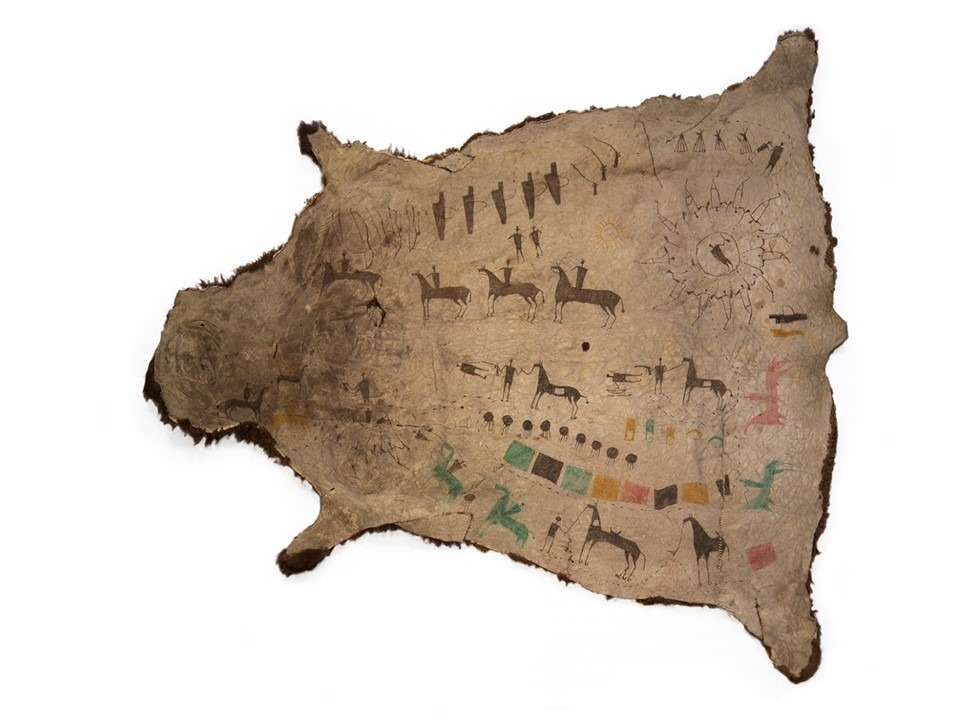Blackfoot “Bison Time”.

This permanent exhibit tells the story of the Blackfoot, a group of peoples inhabiting the Great Plains region east of the Rocky Mountains between the northwestern United States and southern Canada. The term blackfoot is a European exonym that would refer to the dark colors of their footwear: these people call themselves Niitsitapi, which means “original person” in their language.
The Blackfoot Confederacy is composed of three culturally and linguistically linked nations: Siksiká, Kainai and Piikani. The blackfoot were organized in gangs led by chiefs, figures of military and intellectual prestige with limited powers. These bands were nomadic, and relied heavily on hunting American bison for their subsistence. The Niitsitapi considered bison to be “the real food”, and not only hunted them for food: they also used their skins to make clothing and other objects of daily and religious use.
The bison took on great importance in the culture and way of life of these peoples. They were seen as a symbol of wealth and prestige. However, expansion and colonization by the United States and British Canada resulted in the Confederacy’s territory being occupied and divided between the two. Colonial authorities sought to subdue the natives of the region, and to this end, attempted to extinguish the bison, a mainstay of the Blackfoot way of life.
Likewise, the U.S. Army massacred hundreds of natives in episodes such as the Marias River (Montana) in 1870. This context of occupation and subjugation culminated in the signing of a series of treaties that forced the Blackfoot to live on reserves: the Siksiká, Kainai and Piikani reserves in Alberta (Canada) and the Blackfeet Nation reserve in Montana. Despite this history of repression, assimilation and genocide, the Niitsitapi survive today, and their culture and language are in a process of revitalization.

